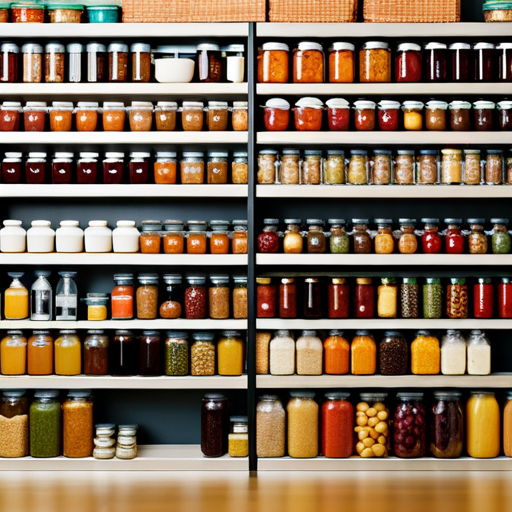As an Amazon Associate I earn from qualifying purchases.
Are you prepared for any situation that may arise?
In this guide, we will show you how to ensure your long-term survival by properly storing food and water.
Learn the importance of food and water storage, understand shelf life and expiration dates, and discover essential methods for water storage and purification.
We will also provide tips on how to maximize nutritional value in your long-term storage.
Don’t wait for an emergency to strike – take control of your own freedom and be prepared.
Key Takeaways
– Proper hydration and access to clean water are crucial for survival in emergency situations.
– Understanding and interpreting expiration dates is essential for determining food shelf life and potential risks.
– Building a long-term food storage plan involves understanding food shelf life, using proper storage containers, and regularly rotating stock.
– Essential water storage and purification methods include using purification tablets, boiling water, and utilizing filtration systems.
Importance of Food and Water Storage in Survival
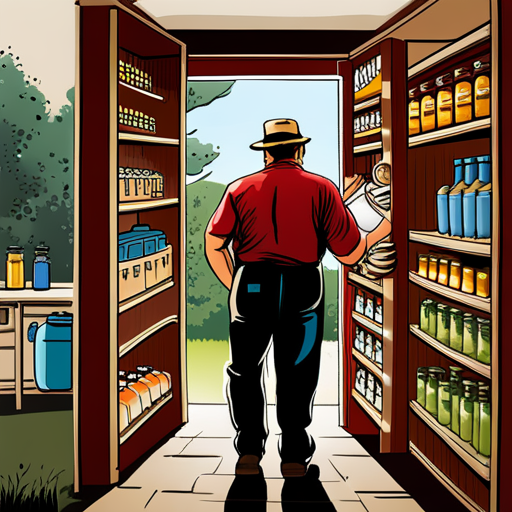
You need to understand the importance of food and water storage in your long-term survival. In a world where freedom is cherished, being prepared for any situation is crucial.
Proper hydration is essential for your overall well-being, especially in survival scenarios. Without access to clean water, your chances of survival decrease significantly. Therefore, it is imperative to have a reliable water storage system in place.
To ensure the importance of proper hydration, you must first find clean water sources. In a society that values freedom, you have the advantage of exploring various options. Look for natural sources such as rivers, streams, and lakes. However, be cautious of potential contaminants or pollutants. Filter the water if possible or use purification tablets to make it safe for consumption.
Aside from finding clean water sources, storing water is equally vital. Prepare by stocking up on water containers or barrels that are specifically designed for long-term storage. Ensure they are airtight and stored in a cool, dark place to prevent bacterial growth. Aim to have at least one gallon of water per person, per day.
Understanding Shelf Life and Expiration Dates

When it comes to extending the shelf life of your food, understanding expiration dates is crucial. You might have wondered how to decipher those confusing numbers and codes on your food packaging.
In this discussion, you will learn valuable tips on how to interpret expiration dates and make informed decisions about the freshness and safety of your food.
Extending Food Shelf Life
To extend the shelf life of your food, it’s important to properly store it in a cool, dry place. Here are some tips to help you maximize food freshness and make your supplies last longer:
1. Vacuum seal your food: Removing air from the packaging can significantly slow down the spoilage process.
2. Use canning techniques: Preserving food in jars with the right combination of temperature, acidity, and processing time can keep it safe for months or even years.
3. Freeze your food: Freezing can halt bacterial growth and preserve the quality of your food for an extended period.
4. Rotate your stock: Make sure to use older items first and replace them with fresh supplies to maintain a constant rotation and avoid waste.
Interpreting Expiration Date
The expiration date on a package indicates the last date the product is guaranteed to be at its best quality. But what does it really mean? How can you interpret these dates to determine the shelf life of your food and ensure your freedom from any potential risks? Let’s break it down in a simple table:
| Date Format | Meaning |
|---|---|
| “Best By” | The date the manufacturer recommends consuming the product for optimal quality. It is still safe to consume after this date, but the quality might degrade. |
| “Use By” | The last date recommended for consuming the product for both quality and safety reasons. Consuming it after this date may pose health risks. |
| “Sell By” | The date by which the retailer should sell the product. It doesn’t necessarily mean the product is no longer safe to consume after this date. |
Building a Long-term Food Storage Plan
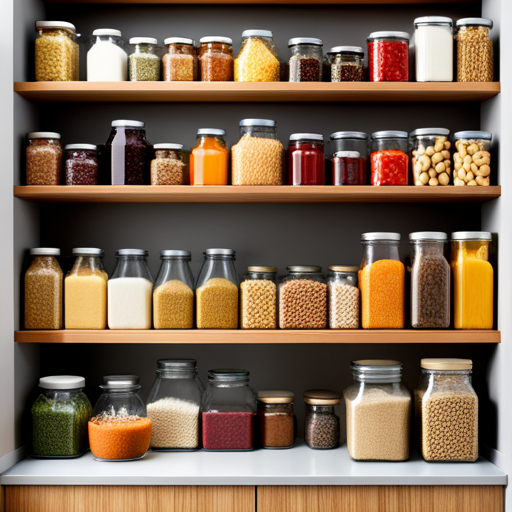
When it comes to building a long-term food storage plan, there are three key points you need to consider.
First, understanding food shelf life is crucial to ensure you are storing items that will last for an extended period.
Second, using proper storage containers is essential to keep your food fresh and prevent spoilage.
Lastly, rotating your food supplies regularly will help you maintain a well-stocked pantry and ensure you are consuming the oldest items first.
Food Shelf Life
Storing food properly can extend its shelf life, ensuring it remains edible for longer periods. Here are some tips to maximize food freshness and preserve food quality:
1. Keep it cool: Store your food in a cool, dry place to prevent the growth of bacteria and mold. Avoid storing food near heat sources, such as stoves or ovens.
2. Use airtight containers: Seal your food in airtight containers to prevent exposure to air, which can cause spoilage. Mason jars, vacuum-sealed bags, and food-grade buckets with lids are great options.
3. Rotate your stock: Practice the ‘first in, first out’ rule by using older food items before newer ones. This ensures that you are consuming the oldest food first and minimizing waste.
4. Consider freezing: If you have perishable items that you won’t be able to consume before they go bad, freeze them. Freezing can extend the shelf life of many food items, allowing you to use them at a later date.
Proper Storage Containers
Using airtight containers is essential for preserving the freshness and quality of your stored food. When it comes to choosing food storage containers, freedom-loving individuals like you need options that are durable, versatile, and convenient.
Look for containers made from high-quality materials like BPA-free plastic or glass, ensuring that no harmful chemicals leach into your food. Opt for containers with secure lids that create an airtight seal, keeping out moisture, air, and pests.
Consider containers that are stackable, allowing you to maximize space in your pantry or storage area. Additionally, choose containers that are easy to clean and dishwasher safe, saving you time and effort.
Rotating Food Supplies
To ensure freshness and avoid waste, regularly rotate your stock of stored items. By maximizing freshness and maintaining a well-organized storage system, you can ensure that your food supplies are always ready for consumption.
Here are four key tips to help you effectively rotate your stock:
1. First In, First Out (FIFO): Always use the oldest items first to prevent spoilage and maintain freshness.
2. Label and Date: Clearly label each item with the date of purchase or expiration to easily identify which ones need to be used first.
3. Regularly Check and Reorganize: Take the time to inspect your storage area regularly, ensuring that items are properly arranged and older items are brought to the front.
4. Plan Your Meals: Incorporate your stored items into your meal planning, using them before they expire and replacing them with fresh supplies.
Essential Water Storage and Purification Methods
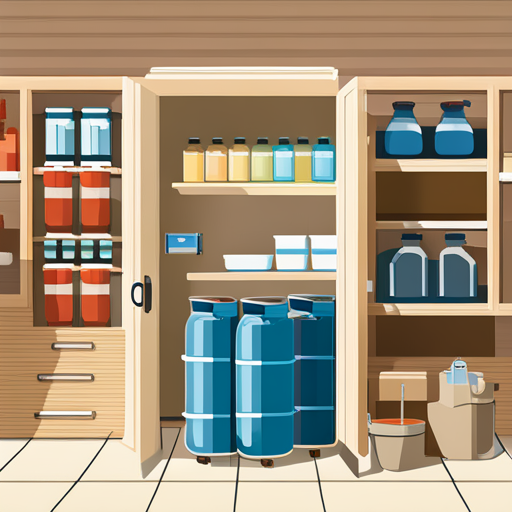
Water purification is crucial for long-term survival in emergency situations. In order to ensure your freedom and autonomy, it is essential to have a reliable water filtration method and emergency water storage system.
When it comes to water filtration, there are several methods you can employ. One of the most effective methods is using a portable water filter, which removes bacteria, protozoa, and other harmful contaminants. These filters are compact and easy to carry, making them ideal for emergency situations.
Another option is using water purification tablets, which kill bacteria and viruses, but may not remove larger particles. However, it is important to note that these tablets can leave a chemical taste in the water.
Additionally, boiling water is a tried and true method that can be used when no other options are available. It is important to bring the water to a rolling boil for at least one minute to ensure its safety.
Alongside water filtration, having an emergency water storage system is vital. It is recommended to store at least one gallon of water per person per day for drinking and sanitation purposes. This water should be stored in clean, food-grade containers, and rotated every six months to ensure freshness.
Storing Food and Water in Challenging Environments
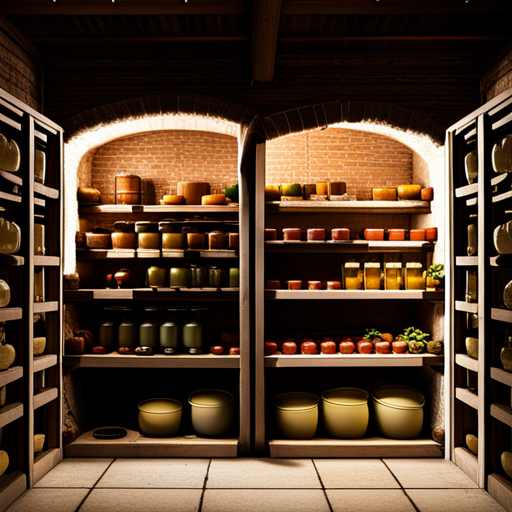
Now that you have learned the essential methods for water storage and purification, it’s time to focus on the challenging climates and the importance of emergency preparedness when it comes to storing food and water. In unpredictable situations, such as extreme heat or freezing temperatures, it is crucial to have a plan in place to ensure your survival.
Here are four key strategies to help you navigate these challenging environments and be prepared for any emergency:
1. Insulation: When storing food and water in extreme heat, use insulated containers or coolers to maintain a lower temperature. This will prevent spoilage and keep your supplies fresh for longer periods.
2. Freeze-dried and dehydrated food: These types of food are lightweight, compact, and have a long shelf life. They are ideal for storing in challenging environments where temperature fluctuations can be a concern.
3. Water purification tablets: In situations where access to clean water is limited, water purification tablets can be a game-changer. These tablets effectively kill bacteria and parasites, making water safe for consumption.
4. Vacuum-sealed packaging: Vacuum-sealed packaging helps to prolong the shelf life of food by removing air, which can cause spoilage. It also protects food from moisture and pests.
Rotating and Managing Food and Water Supplies
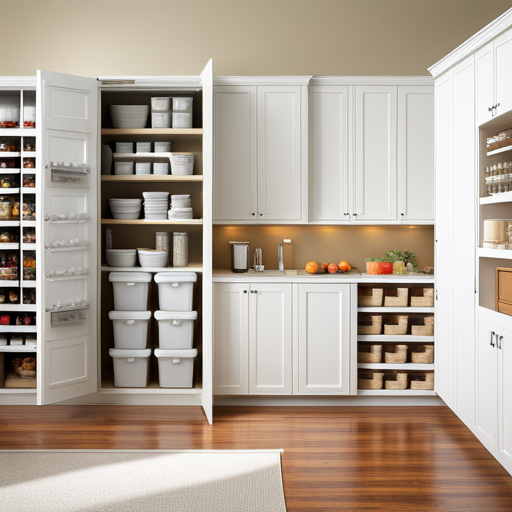
Managing and rotating your supplies is crucial for ensuring the freshness and viability of your emergency food and water. In times of uncertainty, it is essential to have a well-stocked and properly maintained supply.
When it comes to water, maximizing your supply is vital. Start by storing water in clean, food-grade containers and keep them in a cool, dark place. Regularly check for leaks or damage and replace any compromised containers immediately. To further extend your water supply, consider investing in emergency water purification methods. These can include water filters, purification tablets, or even a portable water purifier. Having these tools on hand will give you the freedom to purify water from different sources, such as rivers or lakes, ensuring a continuous supply.
When it comes to food, rotation is key. Regularly check expiration dates and consume and replace items accordingly. Consider organizing your supplies by expiration date, with the oldest items at the front. This way, you can easily access and use the oldest items first, reducing waste and ensuring you always have fresh and nutritious food available.
Tips for Maximizing Nutritional Value in Long-term Storage
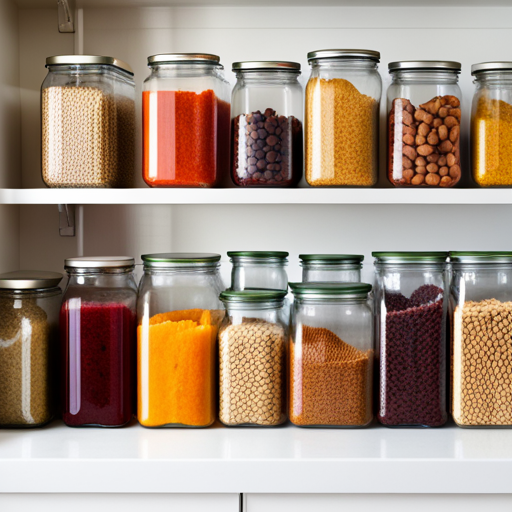
To get the most out of your emergency supplies, it’s important to prioritize the nutritional value of the items you choose to store long-term. When planning your food storage, consider these tips for maximizing nutrient density, while also preserving flavor and texture:
1. Choose nutrient-dense foods: Opt for items that provide a high amount of essential nutrients per serving. This includes foods like beans, lentils, quinoa, and nuts. They are packed with vitamins, minerals, and protein, ensuring you get the most nutrition from your stored food.
2. Rotate your stock: Regularly check the expiration dates on your stored items and use the oldest ones first. This helps maintain freshness and ensures you consume food at its peak nutritional value.
3. Consider freeze-dried options: Freeze-dried fruits and vegetables retain most of their nutrients while having a long shelf life. They are lightweight, easy to store, and can be rehydrated to preserve their flavor and texture.
4. Store herbs and spices: While they might not provide significant nutritional value, herbs and spices can enhance the taste of your meals, making them more enjoyable during an emergency. Plus, they can help boost your mood and overall well-being.
Frequently Asked Questions
Can I Use Any Type of Container for Long-Term Food and Water Storage?
Yes, you can use unconventional containers for long-term food and water storage. However, there are pros and cons to reusing containers for water storage. It’s important to consider factors like durability and cleanliness.
Is It Necessary to Store Different Types of Food in Separate Containers?
Yes, it is necessary to store different types of food in separate containers. Proper organization is key, so labeling food containers for easy identification is crucial. This allows you to maximize storage efficiency for long term supplies.
How Often Should I Rotate My Food and Water Supplies?
To ensure your long-term survival, it’s crucial to rotate your food and water supplies regularly. By doing so, you’ll maintain the quality and freshness of your stored items, ensuring they remain safe to consume.
What Are Some Alternative Methods for Water Purification?
Solar distillation and chemical disinfection are alternative methods for purifying water. You can use the power of the sun to evaporate water and collect the condensation, or you can use chemicals to kill any bacteria or viruses present.
Can I Store Perishable Foods for Long-Term Survival?
Yes, you can store perishable foods for long-term survival. It’s important to follow best practices for food preservation in emergency situations. Proper storage and rotation will help ensure your food remains safe to eat.
Conclusion
In conclusion, you should prioritize food and water storage for long-term survival. Make sure to understand shelf life and expiration dates to maintain the freshness of your supplies.
Create a comprehensive plan that includes essential water storage and purification methods. Consider the challenges of storing in different environments and manage your supplies effectively.
Remember to rotate your stock and maximize nutritional value. By following these guidelines, you can ensure that you are prepared for any survival situation that may come your way.
Stay safe and be prepared!
As an Amazon Associate I earn from qualifying purchases.






